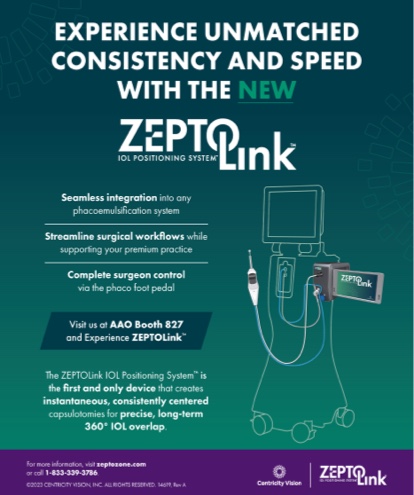Perhaps the most significant ophthalmic advance in the 21st century thus far is the use of femtosecond lasers for lens replacement surgery, but do we need it? More importantly, do our patients need it?
WHAT PATIENTS WANT
In general, patients want three things from eye surgery: safety, a quick visual recovery, and excellent vision without glasses. I suspect femtosecond laser technology will deliver on these wishes. I anticipate a lower rate of complications than currently associated with standard cataract surgery. At present, the rate of vitreous loss ranges from 2% to 6% of all cases. By decreasing phaco time and avoiding the complications that can occur with a manual capsulorhexis, laser surgery should reduce the rate of vitreous loss. The decreased phaco time and power, shorter surgical time in the eye, and finer, more elegant incisions should also enhance the safety of cataract surgery.
The femtosecond laser can help us to achieve cataract surgery patients’ refractive goals. It is time we provided them with better distance UCVA. The results of current IOL studies pale next to LASIK results (40% vs 90% 20/40 distance UCVA [data on file with Bausch + Lomb (Rochester, NY) and Alcon Laboratories, Inc. (Fort Worth, TX)]). The laser’s ability to make precise, reproducible corneal incisions and capsulotomies will allow us to optimize the IOL’s position, more effectively manage preexisting astigmatism, and possibly even reduce induced astigmatism. We may also find that we can improve and quantify the effective lens position of an IOL by controlling the size, centration, and shape of a laser capsulorhexis. If the capsular contraction is more uniform, the IOL’s effective lens position will be less variable. A more accurately positioned IOL will reduce the need for exchanges and secondary procedures such as LASIK or PRK, which will increase patients’ safety. Our use of the laser to create corneal astigmatic incisions to address preexisting cylinder will improve postoperative refractive results.
REPRODUCIBILITY
The advantages of automating certain surgical steps are precision and reproducibility. By providing a reproducible benchmark, femtosecond lasers give us an opportunity to learn more about the clinical significance of precisely sized and positioned incisions and capsulotomies. Rather than measure, position, and create the incisions and capsulorhexis, we can identify and monitor these steps.
Moreover, in my experience, controlling and standardizing the size and centration of the capsulorhexis with a femtosecond laser has increased the accuracy of the spherical component of the IOL.
PROMOTING TECHNOLOGICAL ADVANCEMENT
Most of what we cataract surgeons do depends on several other technologies. The availability of femtosecond lasers will likely encourage the development of other technologies (eg, polymer IOLs that can be injected through a tiny capsulotomy).
I am excited about the potential of laser cataract surgery and my patients’ acceptance of the technology thus far. As more and more of us begin to use the technology, we will be able to compare our results and refine the procedure to produce even better outcomes. These advances will be just in time to meet the needs and high demands of the baby boomer population.
Stephen G. Slade, MD, practices at Slade and Baker Vision in Houston. He is a consultant to Alcon Laboratories, Inc., and Bausch + Lomb. Dr. Slade may be reached at (713) 626-5544; sgs@visiontexas.com.


